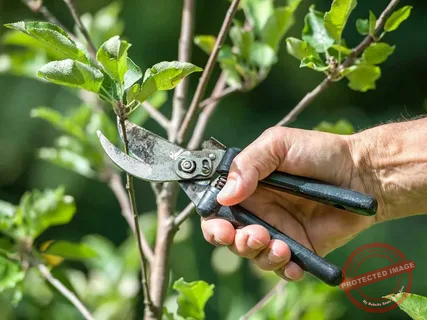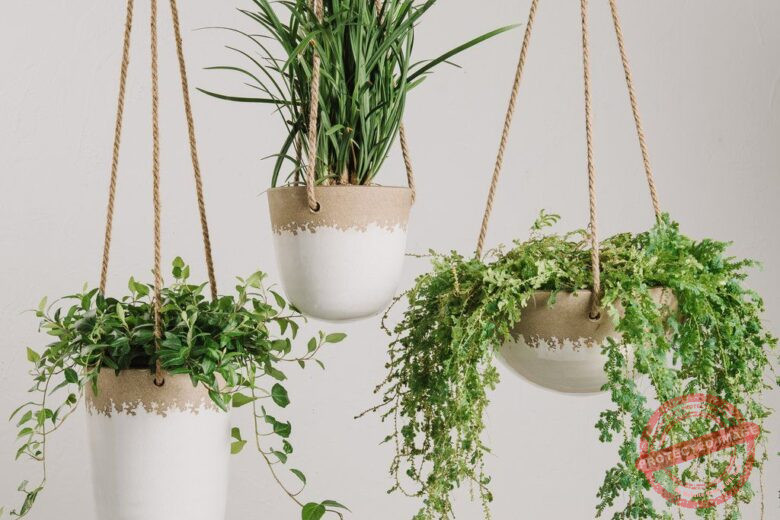Aloe plants, especially the popular Aloe vera, are beloved by gardeners for their hardy, low-maintenance nature and their numerous health benefits. One of the perks of growing aloe is that, over time, these plants typically produce “pups” or offsets—small, baby plants that grow at the base of the parent plant. These pups can be removed and replanted, giving you more aloe plants to enjoy or share with others. However, not all aloe plants readily produce pups, leaving some gardeners puzzled as to why their aloe isn’t multiplying as expected.
Understanding why an aloe plant might not produce pups is key to fostering a healthy plant environment. While aloes are generally tough and adaptable, several factors can influence their ability to create these offsets. From issues with soil and lighting to plant health and age, there are multiple reasons why your aloe may be slow to produce pups.
7 Common Reasons Your Aloe Vera is Not Producing Pups
In this guide, we will explore 7 common reasons why your aloe plant might not be producing pups, and we’ll discuss how to address these issues. Whether you’re an experienced gardener or new to growing succulents, this comprehensive guide will help you troubleshoot the problem and encourage your aloe plant to produce healthy, viable pups.
1. The Aloe is Too Young
One of the most common reasons aloe plants don’t produce pups is simply because the plant is too young. Just like many other plants, aloe needs to reach a certain level of maturity before it can divert energy toward producing offspring. This process can take anywhere from 2 to 5 years, depending on the specific variety of aloe and growing conditions.
When aloe plants are young, their primary focus is on growing strong and developing their root system. Pups are typically produced once the parent plant is fully established and has enough energy to support both itself and its offsets. If you’ve recently acquired your aloe or it’s still in its early growth stages, be patient. Given the right care, your aloe will eventually reach the age where it begins producing pups.
To encourage healthy growth in a young aloe, make sure it’s getting adequate sunlight, water, and nutrients. Aloe thrives in bright, indirect light, and a potting mix designed for succulents can help promote strong root development. Avoid overwatering, as this can damage the roots and slow the plant’s overall growth.
2. Lack of Adequate Sunlight
Aloe plants are sun-loving succulents, and insufficient light is another common reason why they may not produce pups. Aloe vera, in particular, originates from sunny, arid regions where it’s accustomed to long hours of bright light. If your aloe isn’t getting enough sunlight, it may struggle to grow, let alone produce pups.
Ideally, aloe plants should receive at least six hours of bright, indirect sunlight each day. If your aloe is indoors, placing it near a south- or west-facing window can help ensure it gets enough light. If outdoor growing is an option, keeping the plant in a sunny spot can boost its overall health and encourage pup production.
When light levels are too low, aloes may become leggy, meaning they will stretch toward the light source, often becoming weak and spindly in the process. In such cases, the plant’s energy is focused on stretching and reaching for light, leaving little energy for producing pups. If you suspect insufficient light is the problem, consider moving the plant to a brighter location or supplementing with a grow light, especially in darker, winter months.
3. Overcrowded Root System
Aloe plants, like many succulents, can become root-bound over time. When the root system has outgrown its pot, it can cause the plant to struggle and halt pup production. Overcrowded roots limit the plant’s ability to absorb nutrients and water efficiently, stressing the aloe and preventing it from focusing on creating pups.
If you’ve had your aloe plant in the same pot for several years or notice that the roots are growing out of the drainage holes, it may be time to repot the plant. Choose a slightly larger pot with proper drainage, and use a well-draining succulent mix to give the roots more room to expand. Be cautious not to over-pot your aloe, as a pot that’s too large can lead to overwatering and root rot.
When repotting, check for any existing pups at the base of the plant. If present, these can be carefully removed and planted separately. Repotting can help rejuvenate the plant, providing fresh soil and more space for both the parent plant and future pups to thrive.
4. Poor Soil Quality or Drainage
Aloe plants are highly sensitive to soil quality, and poor soil conditions can hinder their ability to produce pups. Aloe vera thrives in sandy, well-draining soils that mimic the arid environments from which they originate. If the soil is too heavy, retains too much water, or lacks essential nutrients, it can negatively impact the plant’s health and prevent it from producing offsets.
For healthy aloe growth, use a soil mix specifically designed for succulents and cacti. These mixes are typically sandy and fast-draining, preventing the roots from sitting in water for too long. Aloe plants are susceptible to root rot, which can occur if the soil is too moist, so well-draining soil is crucial.
In addition to the right soil type, it’s important to ensure that your pot has proper drainage holes. Aloe plants don’t like to sit in water, and without good drainage, excess water can lead to soggy roots and poor plant health. If you suspect poor drainage is the issue, repotting your aloe in fresh, well-draining soil and a pot with adequate drainage can help restore its health and encourage pup production.
5. Nutrient Deficiency
While aloes are not heavy feeders, a lack of essential nutrients in the soil can slow their growth and prevent pup production. Aloe plants generally thrive in nutrient-poor environments, but after several years in the same pot or soil, the nutrients in the soil can become depleted, leading to stunted growth.
If your aloe has stopped producing pups and growth has slowed, it may be time to consider fertilizing the plant. A light application of a balanced, water-soluble fertilizer during the growing season (spring and summer) can help provide the necessary nutrients for healthy growth. Be sure to use a fertilizer that’s appropriate for succulents, as too much nitrogen can lead to excessive leaf growth at the expense of pups.
Over-fertilizing is a common mistake that can harm the plant, so it’s best to err on the side of caution. Fertilizing once or twice during the growing season is usually sufficient to give your aloe the boost it needs to produce pups without causing harm to the roots or leaves.
6. Stress Due to Overwatering or Underwatering
Watering issues are a frequent cause of stress in aloe plants, which can significantly affect their ability to produce pups. Both overwatering and underwatering can harm the plant and disrupt its natural growth cycle.
Overwatering: Aloe plants store water in their thick, fleshy leaves, making them highly drought-tolerant. Overwatering can lead to waterlogged roots, root rot, and overall plant stress. When the roots are damaged, the plant is less likely to produce pups, as it must focus on survival rather than reproduction. If you suspect overwatering, allow the soil to dry out completely before watering again, and always ensure the pot has good drainage.
Underwatering: On the other hand, underwatering can also stress the plant. While aloes are drought-tolerant, they still need occasional deep watering to thrive. If the leaves are shriveled or curling, your aloe may not be getting enough water. In such cases, water thoroughly and let the excess drain away. Restoring a proper watering routine can help the plant recover and potentially start producing pups again.
Finding the right balance is key—water the plant deeply but infrequently, allowing the soil to dry out between waterings. This mimics the aloe’s natural desert habitat and promotes healthy root development and pup production.
7. Health and Stress of the Parent Plant
The overall health of the parent aloe plant plays a major role in whether or not it will produce pups. If the plant is stressed due to pests, disease, or environmental factors, it may not have the energy or resources to produce pups.
Read Also: The different types of peppers we have in Nigeria
Pests and Diseases: Aloe plants are generally hardy but can still be affected by pests like mealybugs or fungal diseases such as root rot. Check your plant regularly for signs of infestation or disease, such as discolored or distorted leaves. If you spot pests, treat the plant with insecticidal soap or neem oil, and remove any affected leaves. Keeping the plant healthy and free from pests or diseases will help it produce pups.
Environmental Stress: Sudden changes in temperature, humidity, or light conditions can also stress aloe plants. For example, moving an aloe from a sunny spot to a shaded area or subjecting it to cold drafts can halt pup production. Make sure your aloe is in a stable environment with consistent light, warmth, and watering routines to avoid unnecessary stress.
A healthy, well-cared-for aloe plant is much more likely to produce pups than one that is struggling due to poor health or environmental stress. Focus on creating a stable, nurturing environment to encourage pup growth.
Conclusion
Aloe plants are generally reliable producers of pups, but various factors can influence whether or not your plant will reproduce. From the plant’s age and health to the conditions in which it’s growing, understanding the needs of your aloe is essential for promoting pup production.
Ensuring your aloe is getting the right amount of sunlight, is planted in well-draining soil, and is free from overcrowded roots, pests, or diseases will set the stage for healthy growth. If your aloe isn’t producing pups, be patient



